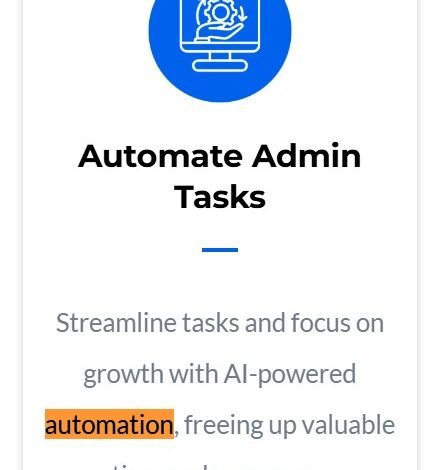
In today’s rapidly changing business environment, the integration of technology has never been more critical. One of the most transformative advancements in this realm is cutting edge automation. This innovative approach enables companies to streamline operations, reduce costs, and improve efficiency.
What is Cutting Edge Automation?
Cutting edge automation refers to the use of advanced technologies to automate processes and tasks that were traditionally performed by humans. This includes everything from manufacturing to customer service. By leveraging artificial intelligence (AI), robotics, and machine learning, businesses can create more efficient workflows.
Automation can take many forms, such as robotic process automation (RPA), intelligent automation, and fully automated systems. These technologies not only save time but also reduce human error, allowing companies to focus on strategic initiatives.
Key Benefits of Cutting Edge Automation
Implementing cutting-edge automation provides numerous advantages. Here are some of the most significant benefits:
1. Increased Efficiency
Automation reduces the time needed to complete tasks. Machines can work faster than humans and operate around the clock. This increased efficiency allows businesses to boost productivity significantly.
2. Cost Reduction
Businesses can cut labor costs by automating repetitive processes. This leads to significant savings over time. In addition, automated processes often have lower operational costs compared to manual workflows.
3. Improved Accuracy
Automation minimizes human errors. This precision is crucial in industries such as manufacturing and finance, where mistakes can lead to costly consequences. Automated systems provide reliable results consistently.
4. Enhanced Customer Experience
With automation, businesses can respond to customer inquiries quickly. For example, chatbots can handle customer questions 24/7, providing immediate assistance. This responsiveness improves customer satisfaction and loyalty.
5. Scalability
Automation allows companies to scale operations easily. As demand grows, automated systems can handle increased workloads without significant changes to staffing or processes. This adaptability is essential for business growth.
Applications of Cutting Edge Automation
Cutting-edge automation has applications across various industries. Here are some prominent examples:
1. Manufacturing
In the manufacturing sector, automation plays a vital role. Robotics can handle repetitive tasks such as assembly, packaging, and quality control. Faster production speeds and higher-quality products are the results of this.
2. Retail
In retail, automation enhances inventory management and customer service. Automated systems can track stock levels in real-time and reorder supplies when necessary. Furthermore, self-checkout kiosks improve the shopping experience for customers.
3. Healthcare
Automation is transforming the healthcare industry. Automated systems streamline patient scheduling, billing, and medical records management. This reduces administrative burdens and allows healthcare providers to focus more on patient care.
4. Finance
In finance, cutting-edge automation is revolutionizing processes such as fraud detection and transaction processing. AI algorithms can analyze vast amounts of data to identify suspicious activities quickly. This enhances security and efficiency.
5. Logistics
Automated systems in logistics improve supply chain management. Drones and autonomous vehicles can deliver products efficiently. Additionally, automated inventory systems track shipments in real-time, reducing delays.
Implementing Cutting Edge Automation in Your Business
To leverage cutting edge automation effectively, businesses must follow several key steps:
1. Identify Opportunities
Start by assessing your current processes. Identify tasks that are repetitive and time-consuming. You can use this analysis to identify areas where automation can make the biggest difference.
2. Set Clear Goals
Define your objectives for implementing automation. Are you aiming to reduce costs, improve efficiency, or enhance customer service? Your automation strategy will be guided by well-defined objectives.
3. Choose the Right Tools
Select automation tools that align with your goals. Research various options available in the market. Make sure the tools work effectively with the systems you already have.
4. Train Your Team
Provide training for your employees on new automation systems. Educate them on how these technologies work and how they can improve their daily tasks. This training fosters acceptance and reduces resistance to change.
5. Monitor Performance
After implementing automation, continuously monitor its performance. Analyze key metrics to assess its effectiveness. Make the required modifications to further optimize procedures.
Overcoming Challenges in Automation
While cutting-edge automation offers numerous benefits, challenges may arise. Here are common hurdles and how to address them:
1. Resistance to Change
Employees may be apprehensive about new technologies. Address their concerns by communicating the benefits of automation. Involve them in the implementation process to encourage acceptance.
2. Data Security
Automated systems require access to sensitive data. Implement robust security measures to protect this information. Regularly update security protocols to address potential vulnerabilities.
3. Initial Costs
Purchasing automation technology can need a sizable initial expenditure. However, view this as a long-term investment. Calculate potential savings and increased efficiency to justify the costs.
4. Integration with Existing Systems
It might be challenging to integrate new automation tools with legacy systems. Work closely with IT teams to ensure smooth integration. Test systems thoroughly before full-scale deployment.
The Future of Cutting Edge Automation
The future of cutting-edge automation looks promising. As technology advances, businesses will continue to adopt more sophisticated automation solutions. AI and machine learning will play an increasingly important role in creating smarter systems. Companies that embrace these changes will thrive in the competitive marketplace.
Conclusion
In conclusion, cutting edge automation is reshaping how businesses operate. By adopting advanced technologies, companies can increase efficiency, reduce costs, and improve customer experiences. Following a structured approach to implementation will help ensure successful outcomes. Embrace automation today to stay competitive in the ever-evolving business landscape.
Transform your operations with cutting edge automation! Implement innovative solutions to enhance efficiency and drive growth. Don’t wait—begin your automation journey today for a smarter future!
